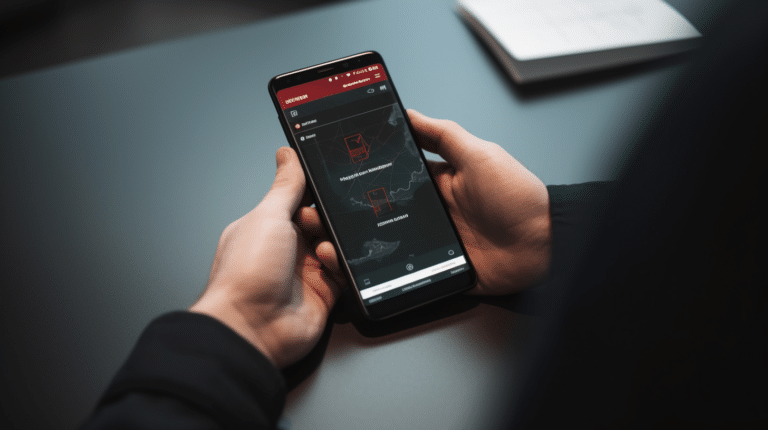In the world of online privacy, VPNs and Incognito Mode are often mentioned as essential tools for maintaining anonymity. While both offer a level of protection, they serve different purposes and function differently. Understanding how these tools work and how they can be combined effectively is key to ensuring a private and secure browsing experience.
VPN, or Virtual Private Network, provides an encrypted connection, hiding your IP address and location from websites and third parties. On the other hand, Incognito Mode, often found in web browsers like Chrome and Firefox, prevents local storage of browsing history, cookies, and other user data. When used together, VPN and Incognito Mode can provide an additional layer of privacy for users who value their online anonymity.
Key Takeaways
- VPNs and Incognito Mode offer different layers of online privacy protection.
- Combining VPN with Incognito Mode can enhance security and anonymity online.
- Understanding their functions and limitations is essential for effective use.
Understanding VPN and Incognito Mode
Defining VPN
A VPN (Virtual Private Network) is a technology used to securely connect to the internet, ensuring privacy and anonymity. It works by routing your internet connection through an encrypted tunnel to a remote server, which then assigns you a new IP address. This process hides your actual IP address and location from websites and services, making it hard for them to track your activities. VPNs are very effective in protecting your privacy, securing your data, and bypassing geo-restrictions on content.
Explaining Incognito Mode
Incognito Mode, also known as private browsing or private mode, is a feature available in most web browsers. When you use Incognito Mode, the browser does not store your browsing history, cookies, or other temporary internet files. This prevents other users on the same device from seeing your browsing activities. However, it is important to note that Incognito Mode only protects your privacy at a local level – websites, internet service providers, and network administrators can still track your activities and collect your data.
In summary, both VPN and Incognito Mode are tools to enhance your privacy while browsing the internet. A VPN provides a higher level of privacy and security by masking your actual IP address and keeping your data encrypted, while Incognito Mode prevents local storage of browsing history and cookies. Utilizing both solutions together can further improve your online privacy.
VPN in Incognito Mode: How it Works
Role of VPN in Private Browsing
A Virtual Private Network (VPN) can enhance your privacy while browsing the web in incognito mode. While incognito mode prevents your browser from storing your browsing history and deleting cookies after your session is closed, it doesn’t hide your IP address or online activities from your internet service provider or websites that you visit. By using a VPN, you create an encrypted tunnel between your device and a VPN server, which masks your IP address and adds an extra layer of protection for your data.
When using a VPN in incognito mode, you can experience a more secure browsing session. The combination of incognito mode’s cookie management and data disposal with the VPN’s IP masking and data encryption ensures that your online activities are better protected from potential eavesdroppers and trackers.
Protection Offered by VPN in Incognito
A VPN in incognito mode provides the following benefits:
- IP address masking: VPNs replace your real IP address with a different one, making it more difficult for websites, advertisers, and other third-party observers to track your online activities and gather data about you. This helps maintain your anonymity on the internet (source).
- Data encryption: All your internet data is encrypted by the VPN before leaving your device. This ensures that any potential eavesdroppers (like hackers, governments, or ISPs) can’t intercept and make sense of your transmitted information.
- Cross-border access: VPNs can help you bypass geographical restrictions or censorship by connecting to servers in different countries. This is useful if you want to access content that is blocked in your region.
However, it’s essential to keep in mind that using a VPN in incognito mode can’t protect you against all forms of tracking or surveillance. Incognito mode isn’t fully anonymous, and some websites or tracking tools can still collect your data via browser or device fingerprinting techniques. Additionally, a VPN can’t protect you from malware or phishing attacks, so it’s crucial to stay vigilant while browsing the internet.
In conclusion, using a VPN in incognito mode can enhance your overall browsing privacy, but it’s not a foolproof solution. Ensure that you choose a reliable VPN provider and continue to exercise caution when navigating the digital world.
The Process of Enabling VPN in Incognito Mode
Steps for Google Chrome
To enable VPN in Incognito Mode in Google Chrome, follow these steps:
- Open Google Chrome on your computer, laptop, or mobile device.
- Click on the three vertical dots in the upper right corner (on PC or Mac) or ⋮ on Android.
- Select “New Incognito Window” or “New incognito tab”.
- Once the incognito window is open, click on the Extensions icon (puzzle piece) in the upper right corner.
- Find your VPN extension and click on its icon to enable it.
- Choose a server location or enable the VPN’s auto-connect feature. Your VPN connection should now be active in incognito mode.
Steps for Microsoft Edge
- Launch Microsoft Edge on your Windows 10 PC or laptop.
- Click on the three horizontal dots in the upper right corner.
- Choose “New InPrivate window” to open a new InPrivate browsing session.
- Click on the puzzle piece icon (Extensions) on the upper right corner.
- Locate your VPN extension and click it to enable it.
- Pick a server location or turn on the auto-connect feature.
Steps for Firefox
- Open Firefox on your computer or mobile device.
- Click on the three horizontal lines in the top-right corner (on PC/Mac) or the three vertical dots (on Android/iOS).
- Choose “New Private Window” or “New private tab”.
- Click on the puzzle piece icon to open the Add-ons menu.
- Find your VPN add-on and enable it by clicking the switch.
- Choose a server location or enable the VPN’s auto-connect feature.
Steps for Safari
To use a VPN in Safari’s private browsing mode on macOS or iOS, follow these steps:
- Launch Safari on your Mac or iOS device.
- Click on “File” in the top left corner (Mac) or tap the double-square icon (iOS).
- Choose “New Private Window” or “Private” and tap the “+” icon (iOS).
- Before browsing, enable your VPN through the macOS menu bar or your VPN app on iOS.
- Choose a server location or enable the auto-connect feature. The VPN should now work with Safari’s private browsing.
Steps for Opera
To enable a VPN in Opera’s private browsing mode, follow these steps:
- Launch Opera on your computer, laptop, or mobile device.
- Click on the “Opera” icon in the top right corner (PC/Mac) or the “O” icon on mobile (Android/iOS).
- Select “New private window” or “New private tab”.
- In the private browsing window, click the “VPN” icon in the address bar to enable Opera’s built-in VPN.
- Choose a server location or enable the auto-connect feature.
These steps will help you enable a VPN in incognito mode for various browsers, providing an extra layer of security and privacy during your private browsing sessions.
Pros and Cons of Using VPN in Incognito Mode
Advantages
Using a VPN in incognito mode enhances your overall online privacy by complementing each other’s features. A VPN provides encryption and masks your IP address, making it more difficult for third parties to track your online activity. This means that your browsing won’t be associated with your true identity (source).
Incognito mode, on the other hand, does not store your browsing history, cookies, or form data. This is particularly useful when using a shared device or preventing websites from gathering too much information about your browsing habits (source).
Together, VPN and incognito mode provide a more anonymous browsing experience, protecting your privacy from both local and external threats.
Disadvantages
Despite their combined advantage, there are some limitations to using a VPN in incognito mode:
- Limited protection scope: Incognito mode doesn’t protect you from all types of tracking. Certain browser fingerprinting techniques can still identify you based on various characteristics, such as browser and device type (source).
- Slower connection: VPNs can sometimes decrease internet speed due to factors such as server location and connection protocol (source).
- Paid VPN services: Although many free VPNs exist, they might collect and sell your data, be limited in server options, or have lower overall performance. A paid VPN service is recommended to ensure better privacy and security.
When using a VPN in incognito mode, it’s essential to be aware of these limitations and adjust your online behavior and expectations accordingly.
Comparison of Various VPN Providers for Incognito Mode
ExpressVPN
ExpressVPN is a highly popular and reliable VPN provider. It’s known for its fast connection speeds and expansive server network, which spans across 94 countries. This ensures a wide range of options for users who want to access geo-blocked content or maintain online privacy while using Incognito Mode on their browser.
Security is also of utmost importance with ExpressVPN. The provider uses industry-standard AES-256 encryption and supports various protocols, including OpenVPN, IKEv2, and L2TP/IPsec. Moreover, ExpressVPN follows a strict no-logging policy to ensure your browsing data remains private.
The ExpressVPN application is user-friendly and compatible with a variety of devices and platforms, making it an excellent choice for a seamless experience while browsing in Incognito Mode.
Other VPN Providers
There are several other VPN providers worth considering for use with Incognito Mode. Some of these include:
- NordVPN: Known for its strong security features and wide server network, NordVPN is a popular choice among privacy-conscious users. It offers obfuscated servers, Double VPN, and a range of advanced security protocols.
- Surfshark: A budget-friendly option that doesn’t compromise on quality, Surfshark provides unlimited simultaneous connections, a user-friendly application, and numerous security features, including MultiHop and ad-blocking capabilities.
- Mullvad: With a strong focus on privacy and simplicity, Mullvad offers a flat-rate pricing model and anonymous account creation. It’s an excellent choice for users who value their privacy above all else.
These VPN providers, along with ExpressVPN, can enhance your online privacy and security while browsing in Incognito Mode. Most of them support multiple devices and platforms and offer a range of server options worldwide. Make sure to select a provider that fits your needs and has a proven track record for maintaining user privacy.
Incognito VPN Vs Regular Browsing
Using a combination of Incognito Mode and a VPN can provide an enhanced layer of privacy and security when browsing the internet. Let’s take a closer look at the differences between these two methods and how they can work together to protect your online activities.
Incognito Mode is a private browsing feature available in most web browsers, including Google Chrome, Firefox, and Safari. When activated, this mode prevents your browser from storing cookies, temporary files, and browsing history. While this is useful to maintain privacy, it is essential to understand that Incognito Mode cannot protect your personal information from being collected by your internet service provider (ISP), trackers, or other third parties.
On the other hand, a Virtual Private Network (VPN) is a tool that extends a private network across a public network, allowing users to send and receive data privately and securely. When connected to the internet through a VPN, your true IP address is hidden, making it difficult for your ISP, advertisers, or hackers to monitor your online activities. Additionally, a VPN encrypts the data you transmit, further enhancing privacy and security while connected to public Wi-Fi or other unsecured networks1.
Now, when you combine Incognito Mode with a VPN, they provide a more robust level of online privacy protection. Incognito Mode eliminates local traces of your browsing activities, while a VPN keeps your personal information secure from external threats. This means that neither your ISP nor websites can easily gather data about your browsing patterns, location, or even your device2.
However, it is important to note that neither Incognito Mode nor a VPN can provide 100% anonymity or privacy on the internet. For example, VPNs can have vulnerabilities that could be exploited, and some websites may not fully cooperate with Incognito Mode. Nevertheless, combining these two methods can still significantly improve your overall digital privacy and security3.
In summary, Incognito Mode is suitable for preventing your browser from storing local traces of your activities, while a VPN adds an extra layer of security and helps keep sensitive data away from prying eyes online. Utilizing both methods together can strengthen your online privacy but keep in mind that absolute anonymity and security are never guaranteed.
Conclusion
A VPN and Incognito Mode serve different purposes in the realm of online privacy. Using them in tandem can help enhance your overall privacy experience.
Incognito Mode is a basic privacy feature found in most web browsers. It primarily prevents the browser from storing your browsing history, cookies, and other private data during your browsing session. However, it doesn’t hide your IP address or protect your traffic from being monitored by external parties. It is useful for casual browsing when you don’t want your activities to be tracked locally on your device.
On the other hand, a VPN provides a more comprehensive solution for maintaining online privacy. A VPN encrypts your internet traffic and routes it through a secure server, effectively hiding your IP address and protecting your activities from being monitored by third parties, including ISPs and websites. This makes it an excellent choice for those concerned about their anonymity and overall online privacy.
To sum up, Incognito Mode offers a basic layer of protection for private browsing, while a VPN ensures a more robust defense against external monitoring and tracking. Combining the two together can offer an enhanced level of privacy when browsing the internet. Remember that utilizing these tools confidently, with a clear understanding of their limitations, is essential in ensuring your online activities remain private and secure.
Frequently Asked Questions
How do I set up a VPN in Chrome incognito mode?
To set up a VPN in Chrome incognito mode, first, choose and install a reliable VPN service. Once installed, launch the VPN and connect to a server. Then open a new incognito window in Chrome by pressing Ctrl + Shift + N or by clicking the three-dot menu in the top right corner and selecting “New incognito window.” The VPN will keep you protected while browsing privately via incognito mode.
Are there any free VPNs for private browsing?
Yes, there are free VPNs available for private browsing. However, it’s crucial to consider the risks associated with using a free service, as they may have limited features, slow speeds, and lack robust security measures. It’s often advisable to use a trusted, premium VPN service to ensure better privacy and security. Here’s a list of recommended VPNs to consider.
Which is the best VPN for incognito mode?
The best VPN for incognito mode depends on your needs and preferences. Features to consider include security protocols, server locations, speed, and price. Some popular and reliable VPN services include NordVPN, ExpressVPN, and CyberGhost. Evaluate your options and choose a service that best fits your requirements.
Can a VPN be used while browsing incognito?
Yes, a VPN can be used while browsing incognito. A VPN secures your internet connection by encrypting data and masking your IP address. Using a VPN with incognito mode adds an extra layer of privacy, as incognito mode prevents your browsing history, cookies, and site data from being saved locally on your device.
Do VPN extensions work in incognito mode?
VPN extensions generally work in incognito mode, but you need to enable them explicitly. To do this, go to Chrome’s extension settings by clicking the three-dot menu, selecting “More tools,” and then “Extensions.” Find your VPN extension, click “Details,” and toggle on “Allow in incognito.” Once enabled, the VPN extension will work in incognito mode, offering secure and private browsing.
Does incognito mode conceal your IP address?
Incognito mode does not conceal your IP address. It only prevents locally saved browsing history, cookies, and site data. Your IP address remains visible to websites, internet service providers, and network administrators. To conceal your IP address and ensure greater privacy, use a VPN along with incognito mode, as it masks your IP address and encrypts your data.
Footnotes
-
(https://www.howtogeek.com/715802/whats-the-difference-between-incognito-mode-and-a-vpn/) ↩
-
(https://www.bitdefender.com/blog/hotforsecurity/the-difference-between-a-vpn-and-incognito-mode-how-do-they-protect-your-privacy/) ↩
-
(https://www.mcafee.com/blogs/privacy-identity-protection/private-browsing-vs-vpn-which-one-is-more-private/) ↩






